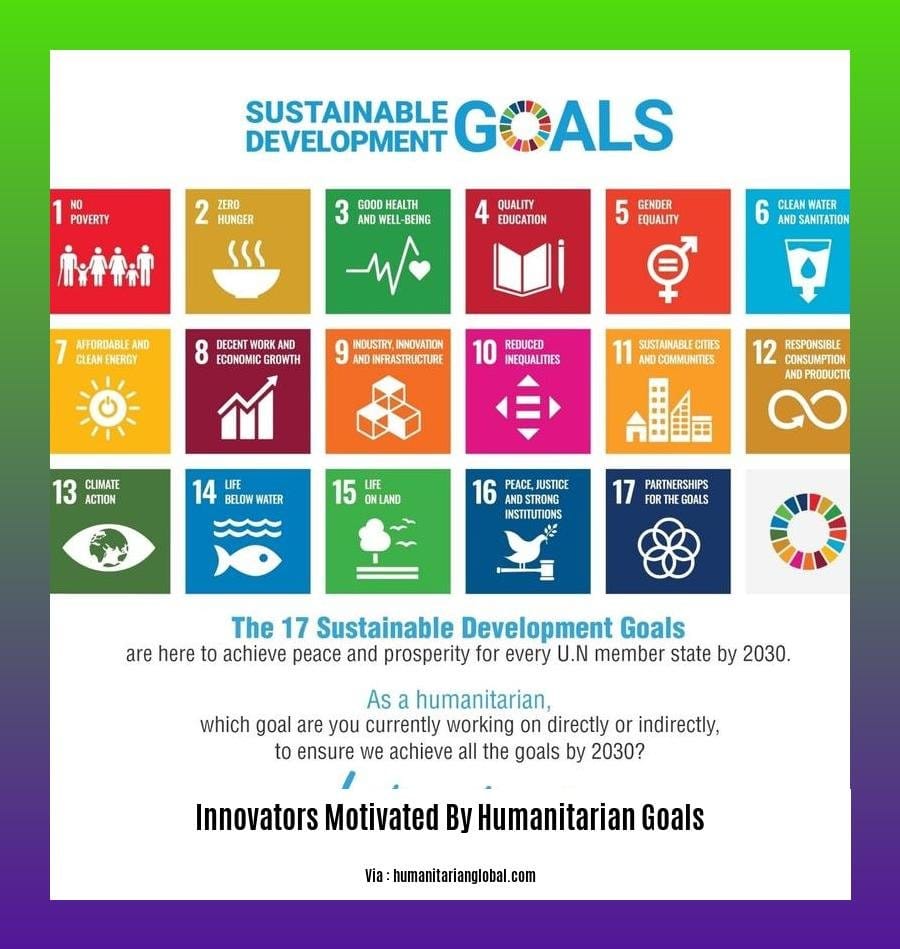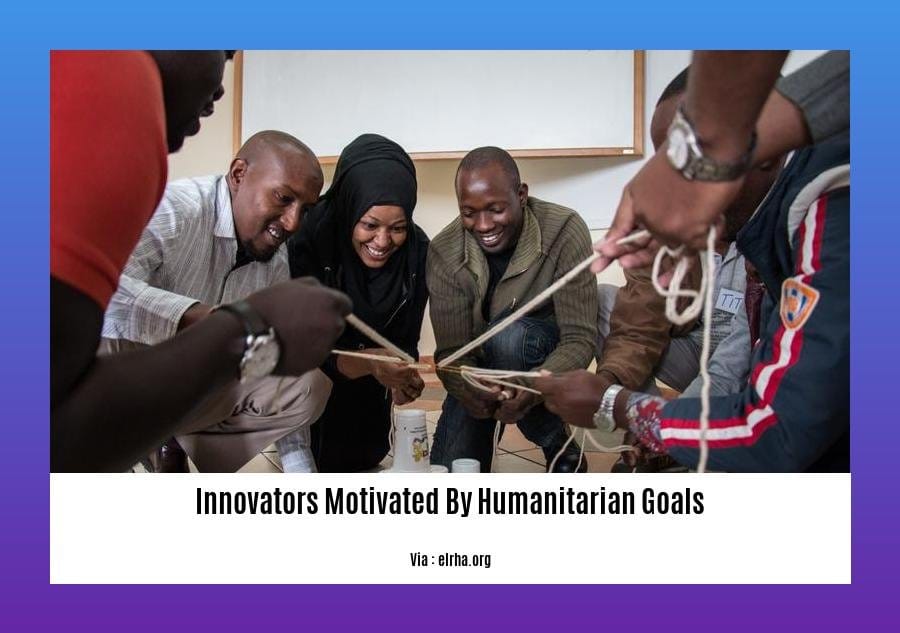The article, titled “Innovators Motivated by Humanitarian Goals: Harnessing Technology for Social Change,” explores the intersection of technology, design, and social impact. It delves into the challenges and opportunities facing humanitarian organizations and showcases the latest technological advancements and design thinking methodologies that can be harnessed to address these challenges.

Key Takeaways:
- Successful humanitarian innovation leads to adoption, scale, and sustainable revenue models.
- Major UN organizations and donors actively support innovation through dedicated hubs and funding.
- Humanitarian innovation involves collaboration between practitioners, policymakers, private sector actors, and affected communities.
Innovators Motivated by Humanitarian Goals: Uniting Empathy and Innovation
Driven by a profound sense of humanity, innovators motivated by humanitarian goals are transforming the world around us. Their unwavering commitment to alleviating suffering and improving lives has given rise to groundbreaking solutions that tackle pressing global challenges.
These innovators often work alongside humanitarian organizations, harnessing their expertise and experience to develop impactful interventions. By combining technological advancements with design thinking methodologies, they empower communities and drive positive social change.
One striking aspect of humanitarian innovation is its focus on empathy. These innovators deeply understand the needs and perspectives of those they serve. They engage with affected communities, listening to their stories and experiences to ensure that solutions are tailored to their specific challenges.
By prioritizing both innovation and empathy, innovators motivated by humanitarian goals create solutions that are not only effective but also sustainable. They strive to develop scalable models that can reach a wide population, ensuring that the benefits of their work are widely shared.
Their dedication to improving the human condition is a testament to the power of compassion and ingenuity. They embody the belief that technology and innovation can be harnessed for good, creating a world where everyone has the opportunity to thrive.
Discover the pioneers driven by desire to help humanity whose compassionate innovations for greater good and groundbreaking betterment of humankind.
Thematic findings—factors impacting the performance of humanitarian innovation
Thematic findings–factors impacting the performance of humanitarian innovation:**
Definition and Conceptual Ambiguity:
Innovation has various meanings and contexts, with no unified definition
in humanitarian contexts. Fragmentation of approaches can hinder progress.
Actors and Roles:
A variety of stakeholders influences humanitarian innovation, including
implementing organizations, beneficiaries, donors, and researchers. Understanding their roles and relationships is crucial.
Ad Hoc and Fragmented Efforts:
Efforts to foster innovation have been haphazard and disjointed, failing to align with a cohesive strategy.
Need for Contextual Analysis:
A deeper understanding of humanitarian innovation systems in diverse contexts is needed to identify key players, roles, and interdependencies.
Key Takeaways:
- Innovation in humanitarian aid lacks a clear definition and fragmented approaches.
- Actors and roles impact the effectiveness of humanitarian innovation systems.
- Reforms have been ad hoc and fragmented, hindering coherence and impact.
- Future research should focus on contextual analysis of humanitarian innovation systems.
Citation:
Innovation in Humanitarian Assistance: A Systematic Literature Review
Insights from the community
The humanitarian sector is constantly evolving, and the need for innovation has never been greater. As technology continues to advance, we have the opportunity to create new and innovative solutions to the world’s most pressing challenges.
One of the most important aspects of humanitarian innovation is to involve the community in the process. By engaging with those affected by crises, we can better understand their needs and develop solutions that are culturally appropriate and sustainable.
Key Takeaways:
- Demand-driven innovation: Start with the real needs of those affected by crises.
- Community engagement: Involve the community in the design and implementation of innovative solutions.
- Support from major organizations: Major UN organizations and donors are investing in innovation.
- Collective outcomes: Innovation should focus on achieving collective outcomes for the entire humanitarian sector.
- Humanitarian Innovation Agenda: The Humanitarian Innovation Agenda aims to address power imbalances and ensure that innovation responds to the needs of those affected by crises.
Most Relevant URL Source:
- Global Insights: The Humanitarian Research and Innovation Agenda

FAQ
Q1: How do I apply to the Humanitarian Innovation Fund?
A1: Sandvik (2017) provides information on major UN organizations and donors that support humanitarian innovation through funding schemes. However, you may want to check the latest guidelines and requirements from the relevant organizations to ensure up-to-date information.
Q2: Who is the primary audience for this article?
A2: This article targets humanitarians, policymakers, practitioners, private sector actors, and affected communities involved in humanitarian innovation.
Q3: Why is innovation important in humanitarian assistance?
A3: Humanitarian innovation is crucial for addressing the complex and evolving challenges in humanitarian crises effectively. It can lead to more efficient and effective delivery of aid, improved coordination, and better protection for affected populations.
Q4: What key insights can be gained from the community regarding humanitarian innovation?
A4: Insights from the community are essential for ensuring that humanitarian innovation is relevant and responsive to the needs of those affected by crises. Community engagement helps identify local challenges, priorities, and potential solutions, leading to more context-appropriate and sustainable innovations.
Q5: What are the key factors that influence the performance of humanitarian innovation systems?
A5: Sandvik (2017) highlights several factors that impact the performance of humanitarian innovation systems, including the involvement of diverse actors, institutional support, funding, and contextual factors. Understanding these factors is crucial for designing and implementing effective innovation initiatives.
- SYBAU See You Baby Meaning: Gen Z Slang Evolves - July 1, 2025
- Unlock Your Inner Youth: Lifestyle Secrets for a Vibrant Life - July 1, 2025
- Decode SYBAU Meaning: Gen Z Slang Explained - July 1, 2025






